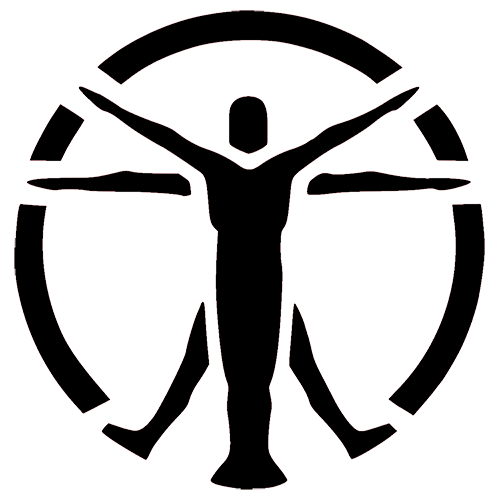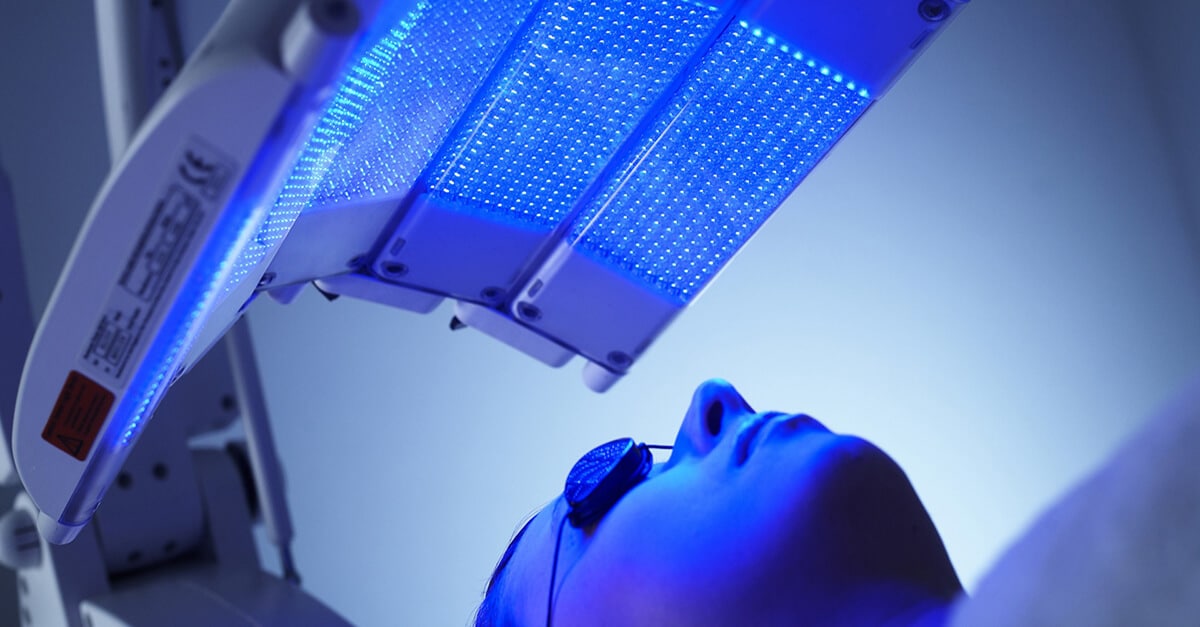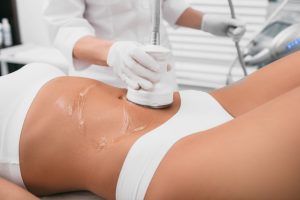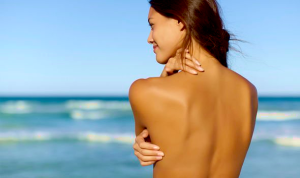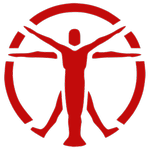Acne is a common skin problem that affects all ages. Light therapy is gaining more and more popularity in the treatment of this condition.
Over the past decades, light therapy technology has been successfully tested by dermatologists, and in recent years, progress has reached the point that light therapy has become available for use at home.
In this article, we examined the effects of blue light on acne treatment, looked at uses and precautions. Also, based on numerous studies, we have determined the effectiveness of this therapy and brought to your attention the top devices for treating acne in the comfort of your home.
Foreo Espada device
TANDA Clear Plus Professional Device
Mē clear device
What is blue light therapy?
The rays of the blue part of the spectrum have a special feature: they can destroy bacteria, including Propionibacterium acnes (or P. acnes), which cause acne. According to the American Academy of Dermatology, blue light therapy clears the skin in most patients with mild to moderate skin conditions.
Blue light therapy may offer some advantages over alternative acne treatments as it is believed to be:

How does blue light therapy work for acne
Blue light therapy is aimed at treating acne and comedones, as it fights one of the most common causes of rashes — the bacterium Propionibacterium acne (it lives in blocked pores and feeds on the fatty acids of sebum).
Blue light emits short wavelengths (400-510 nanometers) and is close to ultraviolet in the spectrum of waves, which gives it the same antibacterial properties but does not expose the skin to additional risk. It penetrates only into the uppermost layers of the skin (by 1 mm), but this is enough to saturate the skin with oxygen, which leads the bacteria to their death.

Blue light has also been reported to fight bacteria and is an effective treatment for rashes that don’t respond to antibiotics. This light therapy also helps prevent future breakouts and bacterial skin infections.
Blue light for acne is suitable for all areas of the body and is most effective in treating mild to moderate acne. Treatment usually lasts two to four weeks, and most patients require a series of three to five visits. The number of treatments you need depends on your skin type and the severity of acne. It is also recommended to carry out subsequent sessions from time to time to preserve the results.
How effective is blue light therapy for acne? Based on scientific research
Blue light is already actively used to treat acne. This has become a reality thanks to numerous studies of the effects of light therapy, proving its effectiveness. Below we review the results of some of these studies.
The study [1] included 21 patients with mild to moderate facial acne who were treated with blue light therapy. All patients received treatment twice a week for 4 weeks. The results showed a significant improvement in skin condition. The number of inflammatory and non-inflammatory lesions decreased by an average of 60%.
The result of the therapy is shown below.

Source: US National Library of Medicine, National Institutes of Health
The next study [2] evaluated the effectiveness of home use of blue light devices in improving damage and reducing the time it takes to heal.
For 30 patients, two identical lesions were selected, one on each side of the face, for treatment with either blue light or a simulated device (placebo). The treatment was carried out twice a day. As a result, there was a significant difference in lesion response to blue light versus placebo in terms of reduction in lesion size and erythema and improvement in overall skin condition. Signs of improvement were observed after two treatments.
The next study aimed to determine the effect of narrow-band blue light on reducing inflammatory and non-inflammatory lesions in patients with mild to moderate acne and assessing patient tolerance to therapy.
A study [3] included using a blue light on 30 acne patients. For 4 weeks, patients received 8, 10, or 20 minutes of light treatments. The results showed that an overall effect on the number of inflammations was observed at the 5th week, and a statistically significant reduction in the number of inflammations was found at 8 weeks. The effect on non-inflamed lesions was negligible. The treatment was well tolerated, with side effects generally assessed as mild (dry skin, redness).

Source: US National Library of Medicine, National Institutes of Health
A final study [4] was involving 45 patients who were treated with high-intensity blue light (415 nm). They received two treatments of 20 minutes a week for 4-8 weeks. As a result, the average improvement score was 3.14 after 4 weeks and 2.90 after 8 weeks, which is regarded as a high result of the treatment. 9 patients had complete acne disappear after 8 weeks. The treatment was well tolerated and 50% of patients were completely satisfied with the treatment.
Top-3 blue light therapy devices for acne
Previously, light therapy treatments for acne could only be done in salons, but now many brands offer lighting fixtures for home use. Their advantage is that home devices can be used every day, and the cost is much lower compared to procedures in salons.
Below we list three main acne treatment devices that are great for home light therapy.
TANDA Clear Plus Professional Device
Tanda Clear is a healing device that operates on the Mē clear device principle and offers three elements: blue light, vibration, and heat. When combined in one device, they provide effective and fast treatment for mild to moderate acne outbreaks.

It is also worth noting that a sensor is built into the top of the device, which activates the blue LEDs only upon contact with the skin. And a built-in timer turns off the device at the end of a three-minute treatment cycle.
This device is also portable — Tanda Clear is small and light enough to carry with you and also to take on the trip.
Mē clear Device
Mē Clear is an at-home blue light acne treatment using Tri-Action technology that combines 414nm blue LED, sonic vibration, and gentle heating to effectively eliminate acne while preventing future breakouts.

The device’s sonic vibration increases microcirculation by exposing bacteria to blue light. The gentle warming produced by the light energy opens the pores and allows the blue light to penetrate deeper and reach more bacteria.
Also, this unit is portable and rechargeable via USB cable. And the makes it safe and effective for all skin types.
FOREO ESPADA Device
Foreo Espada is a lightweight, compact handheld device that is popular in the field of home acne treatment. Espada allows you to easily treat clogged pores, acne, and blackheads with laser precision.

Its T-Sonic pulsations allow the treatment to penetrate deeper into your skin for increased effectiveness, and it also stimulates blood circulation to help skin renewal.
Foreo Espada acne treatment device can work on even the smallest of breakouts. And the built-in skin sensor, similar to TANDA Clear, activates on contact with your skin, saving battery power and keeping your skin and eyes safe.
Potential risks and side effects of blue light therapy
Light therapy has been well studied and is considered safe. When used correctly, blue light therapy does not produce serious long-term effects.
However, some side effects may occur, such as:
- Dry skin;
- Redness;
- Swelling.
These effects are temporary and go away within a few days to a week. To reduce swelling, ice or cold compresses can be applied to the area to be treated.
It is also recommended to test the device on an insensitive part of the body to check the skin reaction and to react on time if an allergic reaction occurs.
If you are taking any medication that increases your sensitivity to light, then you should consult your doctor before starting light therapy.

Summary
The benefits of light therapy are widely recognized in modern medicine, including in the treatment of problem skin.
Blue light has proven to be an effective treatment for acne due to its antibacterial properties. Light therapy devices also help prevent the appearance of rashes, so this is an indispensable tool that will suit almost everyone.
Nevertheless, before using the device, it is worth consulting a dermatologist and also checking the skin for light tolerance to avoid negative consequences and side effects.
FAQ:
💡 What is the best light for acne?
Blue light is most commonly used to treat acne. The wavelength of this light therapy is anti-microbial. Therefore, it destroys bacteria found in the sebaceous glands of the skin, which provoke acne.
🔎 What are the best light therapy devices for acne treatment?
Our top list includes the following devices that can be used as home therapy:
– TANDA Clear Plus Professional Device;
– Mē clear device;
– FOREO ESPADA Device.
More information about these devices in our article.
❓ Can you use blue light therapy every day?
The goal of this therapy is to fight bacteria. Based on this, you can use the device several times a day to treat acne as long as there are no side effects such as skin irritation, redness, or rashes.
🗓 How long does it take for blue light therapy to take effect?
Coming out of research, the first results are noticeable within 2-4 weeks, and sometimes even earlier. We also recommend that you follow the advice of your dermatologist regarding device use and follow-up home care after treatment.
Sources
- Sadia Ammad, Maria Gonzales, Chris Edwards, Andrew Finlay, Caroline Mills. An assessment of the efficacy of blue light phototherapy in the treatment of acne vulgaris. – J Cosmet Dermatol. 2008 Sep;7(3):180-8. DOI: 10.1111/j.1473-2165.2008.00386.x.
- Michael Gold, Whitney Sensing, Julie Biron. Clinical efficacy of home-use blue-light therapy for mild-to-moderate acne. – J Cosmet Laser Ther. 2011 Dec;13(6):308-14. DOI: 10.3109/14764172.2011.630081.
- C. Morton, R. Scholefield, C. Whitehurst, J. Birch. An open study to determine the efficacy of blue light in the treatment of mild to moderate acne. – J Dermatolog Treat. 2005;16(4):219-23. DOI: 10.1080/09546630500283664.
- J. Tremblay, D. Sire, N. Lowe, R. Moy. Light-emitting diode 415 nm in the treatment of inflammatory acne: an open-label, multicentric, pilot investigation. – J Cosmet Laser Ther. 2006 Apr;8(1):31-3. DOI: 10.1080/14764170600607624.
